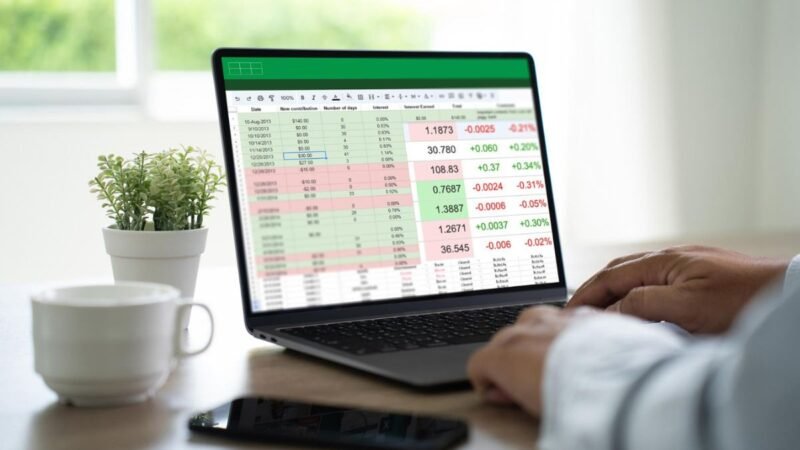Opening An Online Store Is All You Need To Consider

Is opening an e-commerce simple?
Can I open an online store without technical knowledge?
A real formula for success does not exist, but that for failure is very clear and is based on improvisation. Here are the technical aspects you need to consider when opening an e-commerce.
Selling products or services online with e-commerce may seem simple, but it differs from setting up any other business reality.
An e-commerce project must include a business plan because only correct analysis and planning can help keep the reins of online sales and be functional for planning the budget and timing.
The business plan is a preparatory document that describes the business project and must open with a summary of the project and then deal with these topics in detail:
- the concept of the activity
- the company description
- the target
- market analysis and competition analysis
- the marketing strategy
- the general organization of the company
- financing
- analysis of risks and possibilities
Only once this document has been developed can we proceed with a more technical analysis relating to the development of e-commerce. All this provided that you have arranged all the necessary bureaucratic aspects, such as opening a VAT number and communicating with the Revenue Agency.
Technical-strategic aspects for creating a site
When analyzing the technical aspects of e-commerce, the store itself must be considered. Depending on the type of online store (number of products or services in the catalogue, type of payment processing, any cumbersome additional features), you will have to make different decisions about different technical aspects.
Domination
Normally, e-commerce sites are published on .com domains, but purchasing is also advisable. This is necessary because if the second domain was purchased by someone else to put a similar or even different website online, a conflict could arise such that in searches on search engines, the traffic would be dispersed between the two sites. Users would need help understanding or recognizing a unique feature of your e-commerce. The domain can be purchased online or from hosting providers or CMS platforms to create e-commerce.
Hosting
Upstream, in the technical analysis phase, it is necessary to find out about the best hosting plans to identify the one that will host your e-commerce. A good hosting service must provide at least a daily or weekly backup that is always available for possible restoration (the site could be hacked, tampered with, compromised, etc.). When choosing hosting, an e-commerce site should focus on dedicated servers. Shared hosting may work at first, but in the future, as the online store needs more resources (because the product catalogue, traffic, functionality, and complexity increase), switching to dedicated solutions is necessary. Finally, always evaluate the technical support offered, which must be quick and efficient, so prioritize those who offer 24-hour assistance all week and guarantee maximum response times.
Security
The hosting service provider should guarantee a series of features for the site’s security. The first of these is the installation of an SSL certificate, which ensures that sensitive information provided by users (personal and payment data) remains confidential without being intercepted by third parties. In this way, the HTTP protocol will appear in the e-commerce URL, signalling to potential customers that it is a secure e-commerce.
Content creation
Successful e-commerce is able to offer users what they are looking for at the price they expect. The contents represent the true strength of an online store because the clearer, more precise, but also original they are, the more interesting the e-commerce will be in the eyes of users, sometimes even overcoming price barriers.
Technically, you need to consider various types of content when you decide to create an e-commerce site of this type:
“Static” page texts
In e-commerce, you must provide a Homepage, where boxes will mostly appear with references to the latest products inserted, a very short presentation text and updated social media feeds. An “About us” page is essential, where you must explain where your project comes from and a Contact page with headquarters, contact details, a map, and any physical stores.
“Dynamic” page texts
Even an e-commerce site can benefit from a “Blog” section because the frequent publication of content within the site makes it dynamic in the eyes of search engines. This means gaining positions in results. However, you must plan an editorial calendar and identify a resource to take care of it (calendar, editorial and publication).
Product sheet texts
Each product must be correlated with a technical data sheet, a general presentation, and all the details that make sense to include for certain products (nutritional ingredients for food, performance for technology products, safety certifications for children’s products, etc.).
Product images
Each product must have one or more photos that clearly show every detail. Therefore, they can be photos in lightboxes with a neutral white or black background or photo set (in their use context). The important thing is that they are of good quality while paying attention to their weight when uploading to the website.
Explanation video
Videos convert more than words and images, so you should plan to include in your budget the filming of videos explaining the products, in which they are shown in their functions and characteristics. You will need a storyboard, a camera person, a suitable logo, an explanation voice and a video editor.
Post-launch activities online
Once e-commerce is online, it will be brought to web users who do not know its existence. To do this, it is necessary to invest time in creating organic content on social networks and money in Ads. The results that a strategy combining a purely organic online communication editorial calendar and a paid one can bring are superior to those you would slowly achieve without investing anything.
To improve your online positioning by ensuring that e-commerce gains positions in search engines, you can put three activities into practice.
Investments in Ads
After identifying the social networks best suited for your e-commerce, you must consider the investments you will make in campaigns aimed at reaching your target. In general, Facebook and Instagram are for the b2c sector and LinkedIn are for the b2b sector, but a lot depends on the product or service category.
With Ads, you can define a total monthly investment, which will allow you to reach a personalized audience with parameters that you can set based on your Buyer Personas, start one or more campaigns and monitor the results day by day. The same goes for Google, where you have to invest to increase traffic on your e-commerce, starting from searches made directly on search engines.
SEO
Doing SEO means many things, including optimizing e-commerce by inserting titles and descriptions for each page writing the texts of products and other pages with keywords that index them for those searches. The URLs of the pages must also be defined in a simplified way with the descriptive keywords of the page (they must contain the name of the product to be sold online and the reference category).
Link building
Always aimed at increasing traffic on your site, a link-building strategy involves planning articles on external portals with an e-commerce link. In practice, you identify sites with good domain authority, propose to them the publication of an article on a topic that concerns your products or services and insert one or more links within the text (in a natural, not merely promotional manner ) to a page of your e-commerce, preferably to another of your articles. In this way, e-commerce receives traffic from authoritative external sources and increases its value, which also depends on the coherence of the two topics.
Economic aspects: the costs of a site
Creating a site is only possible with an investment, and opening an online store necessarily requires an initial cost plan. This doesn’t mean that under tens of thousands of euros is not possible, but it’s not even imaginable to spend 200 euros and expect to become the new Amazon.
Here’s what you need to consider in terms of costs.
Technical costs
When you create e-commerce, you can certainly use free, open-source platforms, but at a certain point, investing in more complex features will inevitably be inevitable. For example, Prestashop is free, but to customize the site template or add features, you must purchase them on the official PrestaShop Addons marketplace. Once the platform has been chosen, purchasing the domain, i.e., the e-commerce address, either directly on the platform or through other providers, is necessary. We also consider each platform’s assistance and, therefore, the hosting costs, ranging from 50 euros for shared hosting to 1000+ euros for dedicated hosting.
Construction costs
The e-commerce content must be written from an SEO perspective, the images taken with professional photos in light boxes or in the studio must be set, and everything must be entered into data entries on the site. Each item has its cost, which is reduced if you have someone internally who will take care of these interventions, while if you have to outsource, you could involve two figures.
Graphics costs
If you want your e-commerce to have customized graphics, you will need a graphic designer and a developer. The first is to create the graphics files for the pages, and the second is to recreate them on the site, whether from the platform or in a personalized way with code. Costs increase in the second case because a custom site costs more than one based on an open-source CMS in which to purchase individual modules.
Advertising costs
The site must be promoted; therefore, you must include in the costs the monthly advertising budget, the channel management budget (if you entrust it to an external agency) and one-off advertising expenses such as sending DEMs to databases of external companies.
In Conclusion
The technical aspects of creating an e-commerce must be taken into consideration immediately. They must immediately be postponed until the initial budget is confirmed because they will represent an important cost item. Consider the choice carefully based on the business plan and the complexity of the online store.
Also Read : The 5 Most Profitable Online Store Ideas To Start In 2021


